Chromecast Ultra
The Chromecast Ultra was Google's initial drive for the 4K HDR crowd: a wafer-sized streaming device that can receive 4K HDR signal from any mobile device currently on your network. It's similar to Google's previous streaming dongles in being a small device with big potential, so what makes this Chromecast so special?
The Chromecast Ultra earns that extra label not only because it added 4K playback and HDR video for the first time – it also boasts an Ethernet port and improved internal components, so videos load faster and are less susceptible to lag. Those features help the Chromecast Ultra feel more premium than its predecessors, without offering a major departure in terms of form factor or available content.
And despite being a slightly older model by 2021 standards, that only makes the Chromecast Ultra more likely to go on sale during the Black Friday 2021 sales period, coming up soon. Retailers will likely be looking to shift older stock, so expect to see bargain prices on the Chromecast Ultra in the coming weeks.
- The cheapest Chromecast prices and deals for Black Friday
- The best Google Stadia deals for Black Friday
The key feature that continues to makes the Chromecast Ultra (and future Chromecast-equipped devices) so popular is simply their ability to 'cast' content – to take a link sent from your phone, tablet, laptop, or smart speaker and load it up on your TV.
You can simply cast YouTube videos or Spotify playlists, or you can go further with security cam feeds and games, and connect the Chromecast Ultra up to Google Home and Google Assistant (so you can get photos, weather and so on displayed).
We'd say the Chromecast Ultra is well deserving of its "ultra" status, but first we're going to talk about two shortcomings: the lack of a remote, and the lack of a standard user interface.
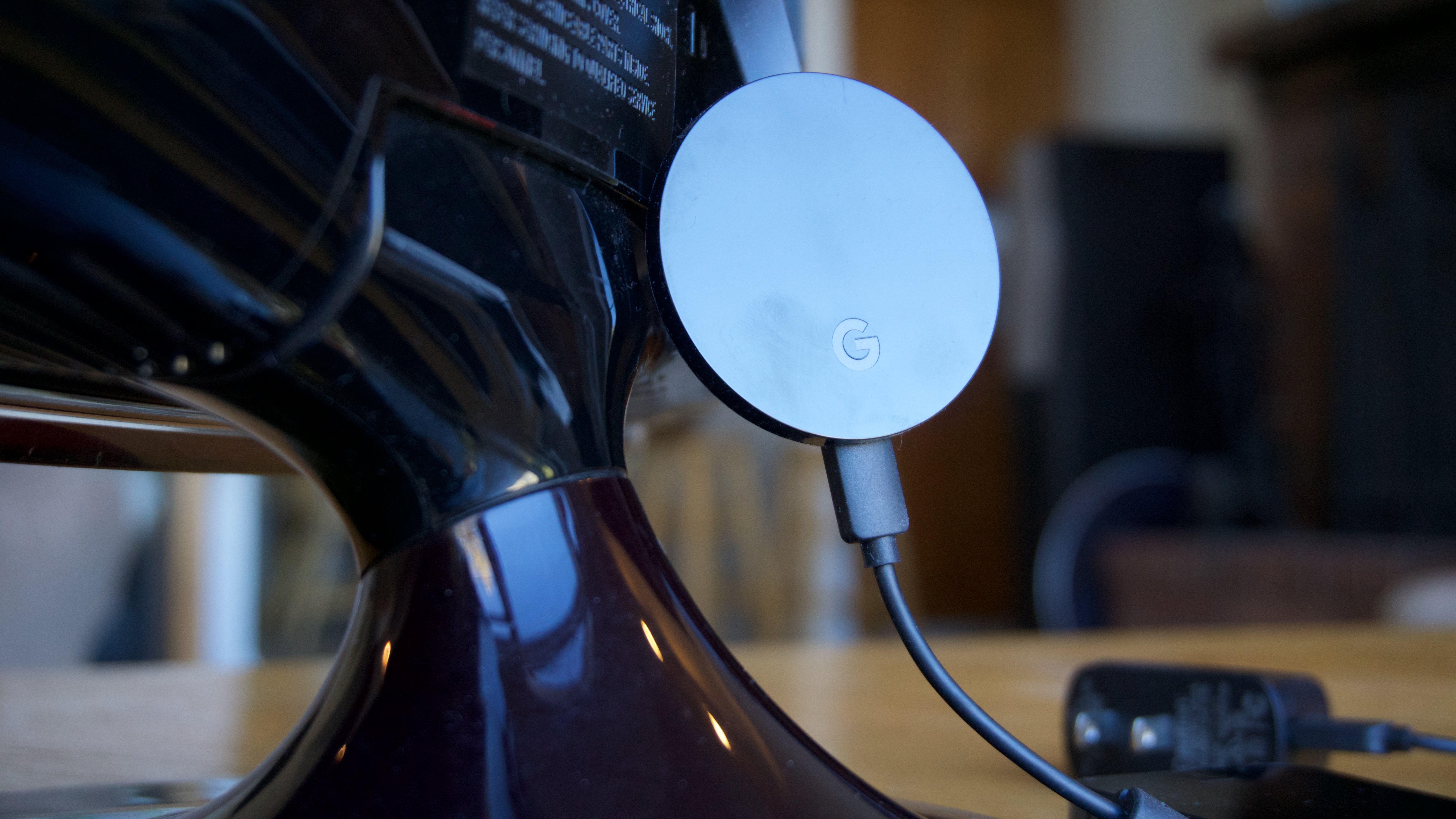
Not having a place on the TV to find fresh videos can frustrate those used to flipping through television stations, and if you're new to casting it can be confusing to get to grips with the interplay of phone, laptop or tablet and the TV.
That makes the Chromecast Ultra more suitable for tech-savvy people comfortable controlling the big screen with a smaller phone or tablet – who don't necessarily need that big user interface to surface content. Buying it as a gift for someone who doesn't know their Google Cast from their Bluetooth might not go down so well.
Now that we’ve got that out of the way, let’s dive into what makes the latest Chromecast Ultra the best one yet for 4K HDR owners.
Chromecast Ultra: design
- Similar puck shape to the original Chromecast
- Adds an Ethernet port to the power cable
- Only available in one color
The Chromecast Ultra doesn't change too much design-wise from its immediate predecessor – it's more or less the same puck-like shape as the previous Chromecast. That’s a very good thing: the previous one remains one the sleekest, most beautifully minimal streaming devices on the planet.
An HDMI cable juts out of one end of the disc while the other hosts a microUSB port that needs to be connected to a wall outlet via the included adapter - unlike the original Chromecast, the Ultra can't be powered by a USB port on your TV.
From sight alone though, you'd be hard pressed to pick out the differences between the 2nd-gen Chromecast and the Chromecast Ultra.
Circumference-wise, the Ultra is just a hair bigger than the much older 2015 Chromecast – it's 2.29 inches (58 mm) now rather than 2.05 inches (52 mm). That's not a big difference, and the Ultra still hides behind the TV with relative ease.
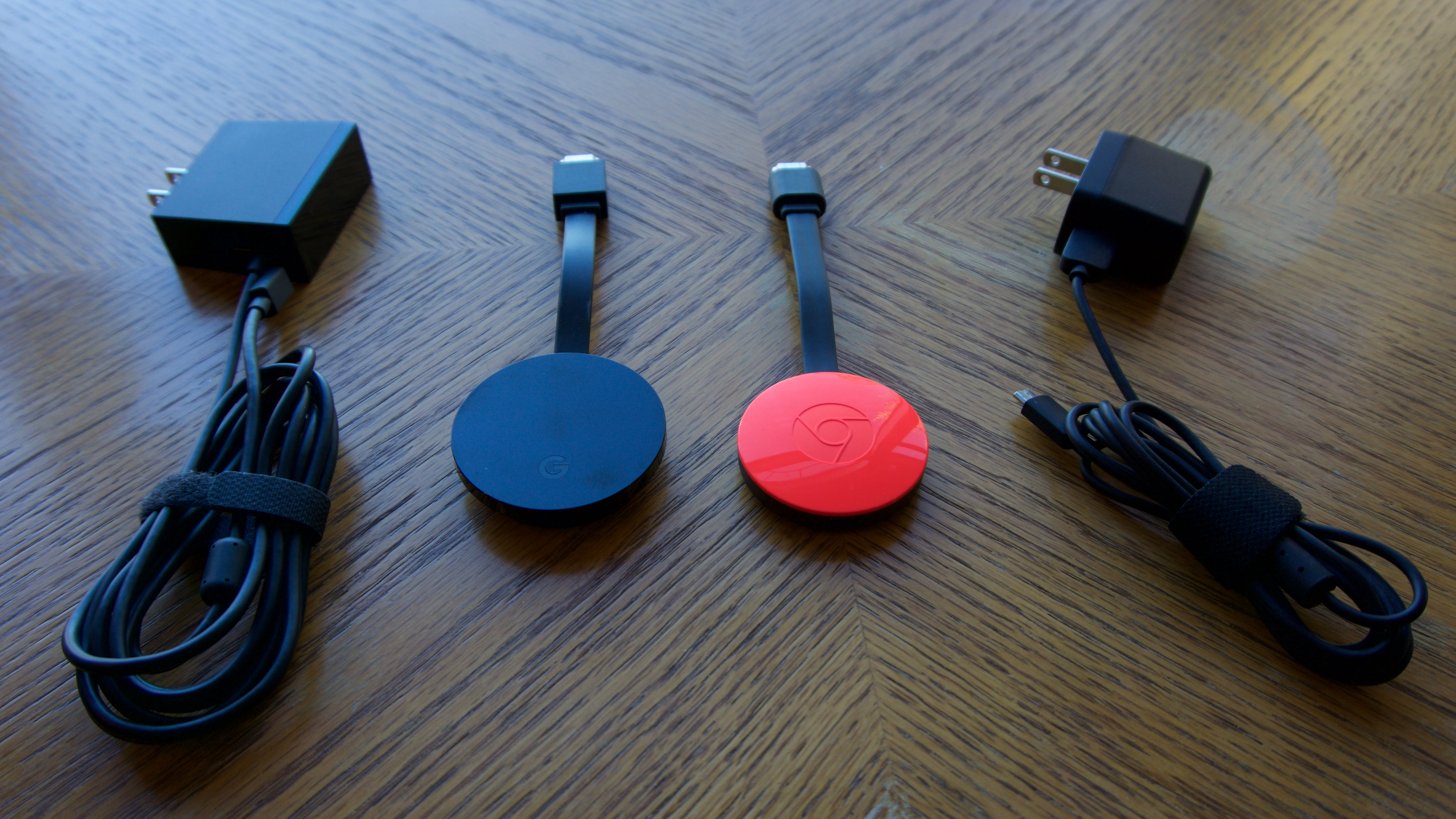
One minor tweak is that the Chromecast Ultra only comes in a single color, black, unlike the standard Chromecast which you can get in fun hues like coral and lemonade.
Admittedly, few will likely mourn the passing of these color options – the dongle is hiding behind the TV after all – but was nice to have the choice.
Another alteration Google's designers made with the Chromecast Ultra was to introduce an Ethernet port to the charging cable that plugs into the wall. If you've got a router close enough, that'll enable faster, more consistent streams over a wired connection (though 4K is still possible with Wi-Fi).
Finally – and now we're really down to the details – instead of an engraved Chrome logo on the top face, you'll find a simple G. Google obviously wants to bring the Chromecast more in line with other products like the Google Home, and play down the link with the Chrome browser.

Beyond those four alterations, everything else is exactly how you remember on the Chromecast Ultra. There's the coiled 802.11ac (2.4 GHz/5 GHz) Wi-Fi antenna tucked inside the casing for high-performance streaming, and the reset button along the outer rim for restarting the system should it start acting up.
Chromecast Ultra: interface
- There isn't one really
- But set up is quick and dead simple
- You'll need to use the Google Home app
Once you run the included five-foot power cable into a wall outlet with the bundled adapter (and optionally plug in the Ethernet cable), it's time to run through the new Chromecast Ultra's quick and easy setup process.
The process takes all of five minutes, most of which are spent downloading the Google Home app from either the Google Play Store or iOS App Store and giving the Ultra a minute to download the latest firmware.
You'll be asked to connect the Chromecast Ultra to your home wireless network (unless you're using a wired connection, of course) and finally you'll be met with a brief settings screen. You're up and running.
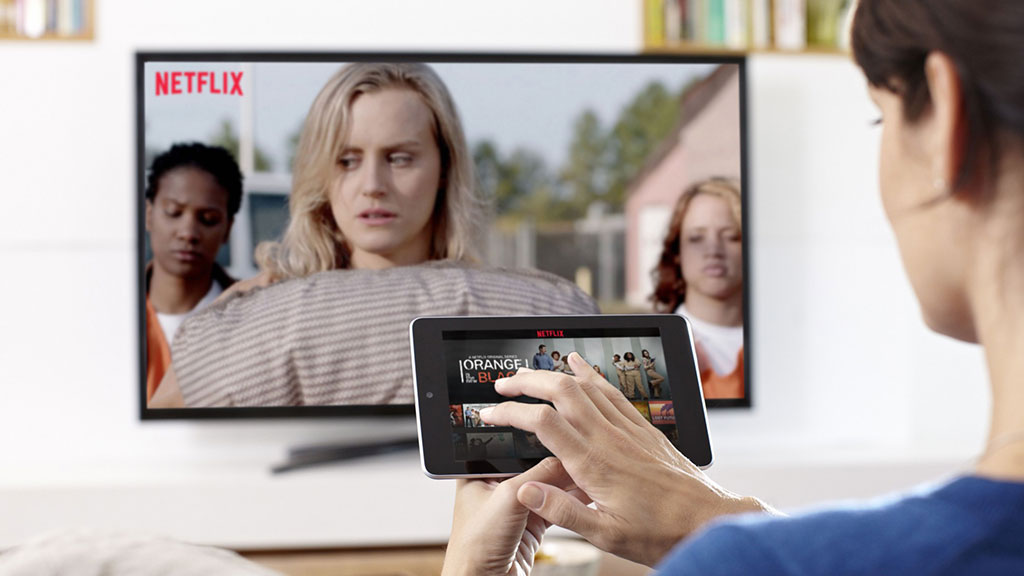
When you're not actively streaming something to the Chromecast Ultra, it enters a screensaver mode displaying images from Google Photos, Facebook, Flickr, curated artwork, the weather and even headlines from top news sources.
Unlike the Amazon Fire TV Stick or Roku Streaming Stick, there’s no central hub for apps that you can browse on the TV itself. The Chromecast Ultra is either taking content from your phone, tablet or PC, or simply displaying pretty pictures until it’s told to do otherwise.
That said, the Google Home app serves as the main spot for checking out what content is available to stream, and which apps you already have installed that work with your new streaming dongle.
One of the key points to make content-wise is that every app that works with the earlier Chromecasts also works with the Chromecast Ultra (and vice versa). The Chromecast Ultra doesn't really do anything the originals don't – it just does it faster and (sometimes) in a higher resolution.
But just because the Chromecast Ultra inherits its content library from its predecessors doesn't mean that you won’t find anything to watch. Chromecast Ultra supports Netflix, HBO Now, Spotify, NFL Sunday Ticket and Twitch here in the US to name just a few, as well as Sainsbury’s Movies and TV, Blinkbox, BT Sport, NowTV, Napster and, of course, BBC iPlayer and BBC Sport in the UK. But this is just the tip of an ever-expanding iceberg.
The only app sorely missing from Chromecast's arsenal is Amazon Prime Video, which the company has reserved for their own line of streaming products, the Fire TV and Fire TV Stick. You’ll be able to stream Amazon’s video service from a PC or Mac (which we'll touch on shortly), but the absence of a native app means that some people who watch Amazon's service exclusively might feel like they have no place using Google’s streamer.
The Chromecasts do have exclusive, noteworthy apps of their own. We've rounded up our favorites elsewhere (here’s the 20 best Chromecast apps for Google's streaming stick) but a few others that we feel are worth checking out are Plex, Artkick, Big Web Quiz, Deezer and AllCast.
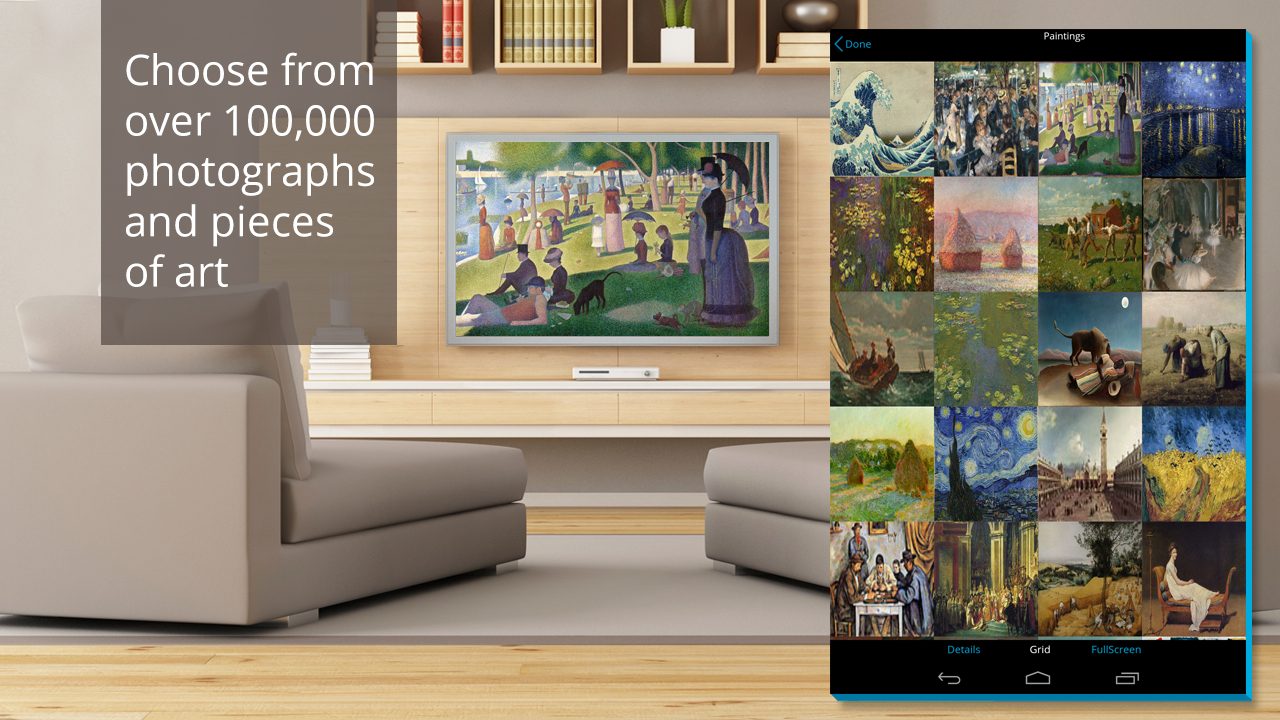
While you won't find one spot to find apps and content on the TV itself, you can always check out the Google Home app on iOS and Android. This has absorbed the old Chromecast app and is the perfect place to find TV, movie and music apps to download and install for your Chromecast Ultra.
Google's app promises a universal search function that, as with Roku or Android TV, allows you to either type in or say the name of a movie and TV show and pull up a list of every source for that content.
This can ultimately save you money by showing you content on the services you already pay for, instead of making you go into every app individually or accidentally drop money on something you already paid for on another platform.
But how, exactly, do you take content from your mobile device and send it to your streaming dongle? You can always expect one vital feature to be a part of any and all Chromecasts from now until the end of time: that familiar Cast button.
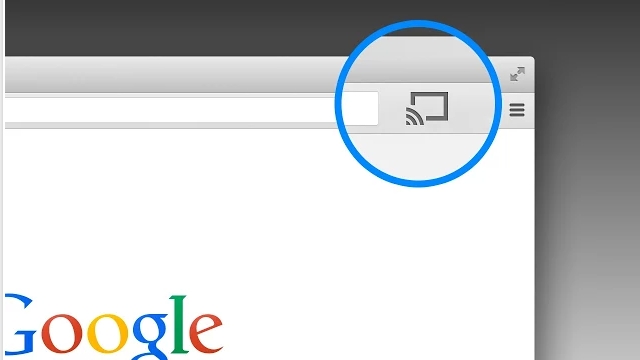
Chromecast Ultra: the Cast button
- You'll need it to do almost everything
- You can cast from PCs and Macs as well
The Cast button is the rectangle with broadcasting bars (it looks like the Wi-Fi symbol) in the corner of most mobile apps. Anytime you want to take content from your phone or tablet and send it to the big screen, press the button and select your Chromecast from the dropdown list.
When the Cast button is pressed, the Chromecast Ultra takes the location of the video’s URL and plays it on your TV, leaving you mobile device free to browse the web, check emails and use data without affecting the on-screen content’s performance. You can also pause and stop playback of course.
But that's not the only trick Google’s taught its dinky streamer. Also interesting is "fast play," a sort of prediction algorithm in the Chromecast app that determines what you might watch next based on your previous choices. The feature then starts to pre-buffer the video before you start it, eliminating the loading time before each video. If you’re browsing Netflix, for instance, it might pre-load the first few seconds of the show you’ve been bingeing all week.
All the talk of apps aside, the true beauty of the device is that it’s not limited strictly to your phone or tablet. Install Google Chrome on any PC or Mac, and you can send any web page to the streaming dongle. Video quality using the Chrome browser on Netflix is better than average, and for the most part looked quite good to us, minus the one or two times it needed to stop and buffer.
LFG? Don't look to the Chromecast Ultra
- The Chromecast Ultra really isn't great for gamers
However, while Google has certainly figured out how to make the Chromecast Ultra an appealing destination for video lovers, it hasn't found out how to embrace gaming in the same way its competition has: Chromecast games are few and far between, and generally feel like shovelware put out by third-party developers.
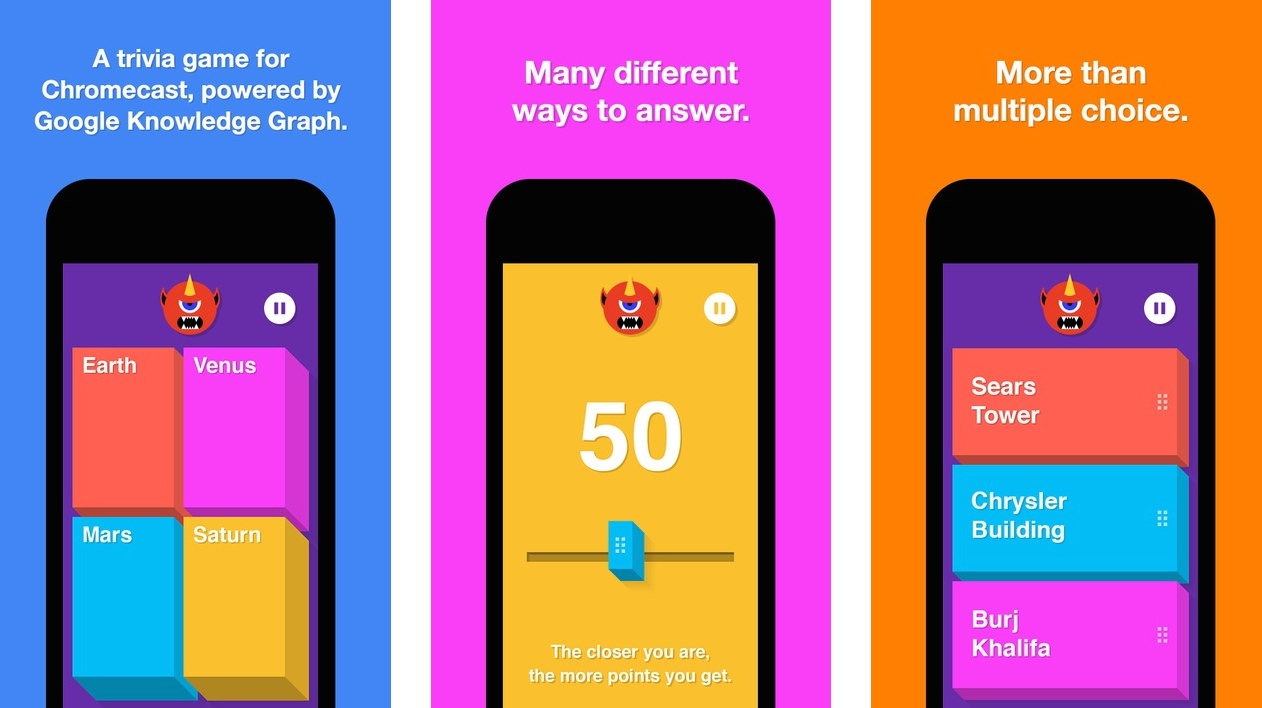
If you're looking for a casual gaming experience like the one you'll find on your phone, Amazon Fire TV and Apple TV offer that in spades. Heavy gaming fans should also consider the Nvidia Shield console for its on-demand game-streaming service, GeForce Now.
The Chromecast Ultra? Not so much. It's a sore point, but one we're ultimately able to forgive, thanks to Google doing so much else right on the product.
So how does the Chromecast Ultra perform in the living room? We're glad you asked...
Chromecast Ultra: performance
- Snappy performance loading content
- Doesn't drop out, especially when wired to your router
- Works well with Google Home
By and large, performance across the board is excellent on the Chromecast Ultra, especially when compared with the Chromecast that came before it.
1080p videos load up in a snap and rarely crash in apps like Netflix and YouTube, while songs switch with less dead air while using Deezer, Pandora and Spotify. Not to mention the fact that Chromecast Ultra is probably the cheapest – and arguably one of the best – ways to watch 4K content.
Let’s start, though, with 1080p performance.
If you're using an HD screen you can expect slightly faster load times and slightly less buffering than if you were to use the older, 2nd-gen Chromecast. The Chromecast Ultra isn’t built to upscale content in any way, so there’s no real tangible benefit for buying one if you own a 1080p TV, save for the slightly better internals.
For testing, we watched shows like Anthony Bourdain's Parts Unknown on Netflix and a dozen YouTube videos, none of which suffered from buffering issues for more than a few seconds. There was a minor hiccup once where we couldn’t change the video on the Chromecast Ultra despite closing and re-opening the YouTube app, but there's no evidence to suggest that will be a common problem everyone will encounter.
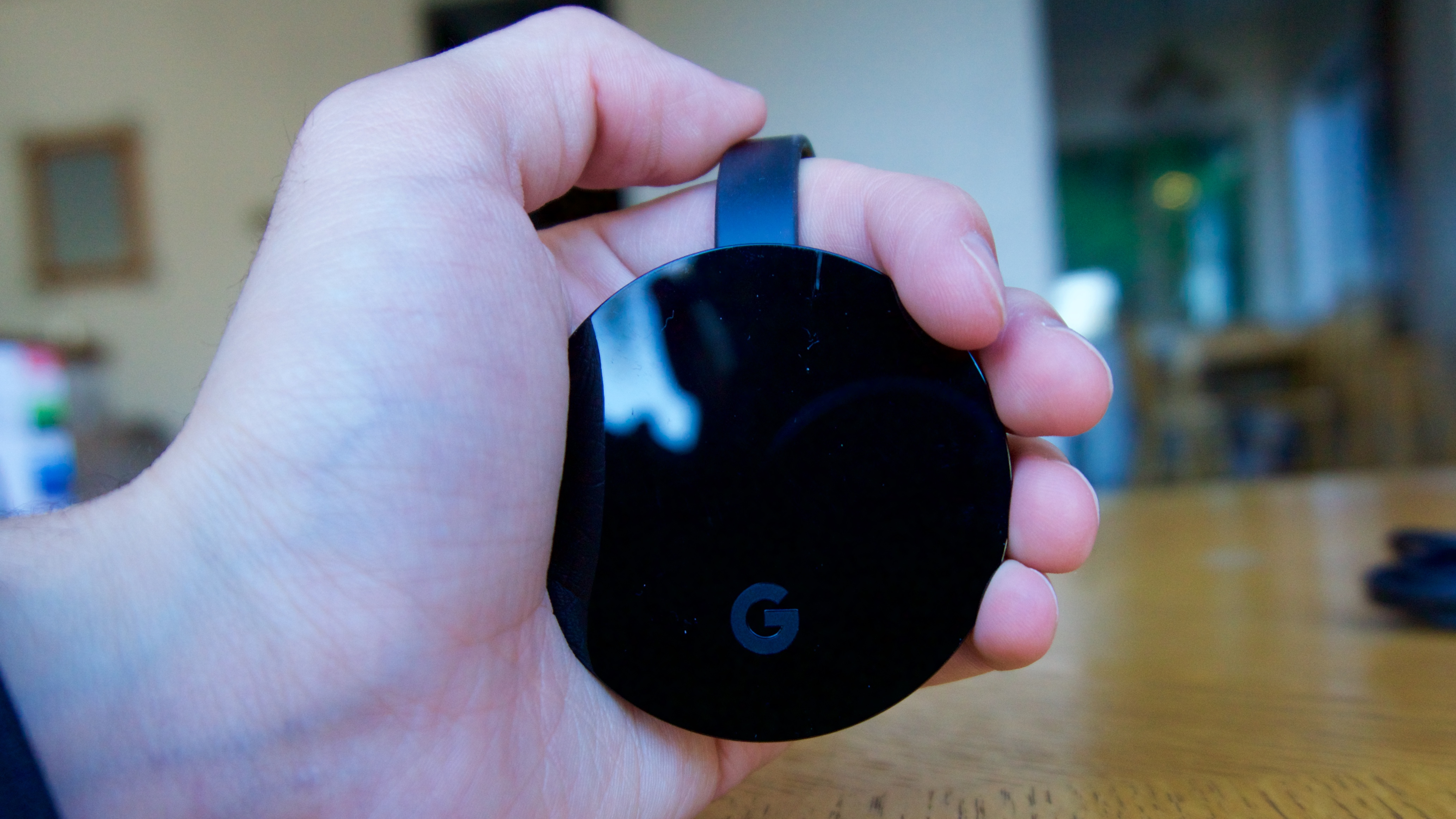
The biggest draw to Google's latest Chromecast device, however, is 4K and HDR functionality, both of which you'll be missing out on if you're stuck with a 1080p screen.
What makes the Chromecast Ultra a better buy than, say, the Roku Premiere+ which also handles HDR and 4K, is that the Ultra does both versions of HDR – HDR10 and Dolby Vision. With more and more HDR content arriving, you know you'll be covered for some years yet.
In terms of 4K HDR content, you can pick from a few different services, including Netflix, Google Play Movies and TV, Vudu (which also supports Dolby Vision), YouTube, UltraFlix and FandangoNow.
There are a few caveats that come with each service – Netflix subscribers will need to up their account to the highest paid tier to access 4K content, for example – but it’s nice to have so many options to choose from right out of the gate.
For those inclined to wonder about video and audio codecs, Chromecast Ultra supports H.264 1080p, H.264 720 x 480, MPEG-4, VP8 video and AAC-LC, AC3, eAC3 (Dolby Digital Plus), FLAC, MP3, PCM/WAV, Vorbis audio files. (A full list can be found on Google's Chromecast support site.)
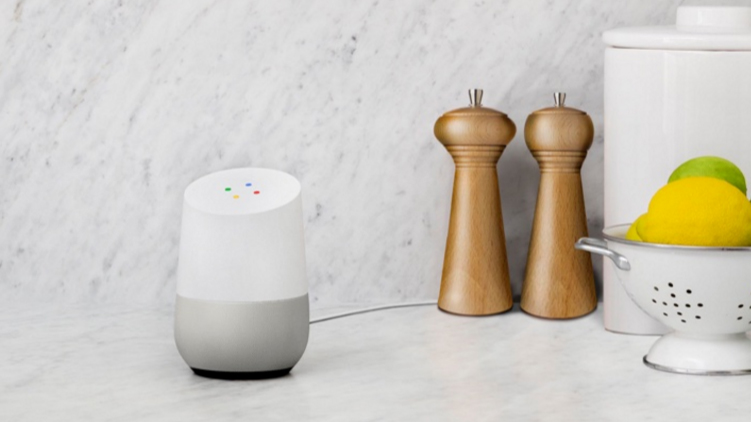
One last point worth mentioning here is that the Chromecast Ultra really plays nicely with the Google Home smart speaker. Along those lines, there are few better indications that we’re living in the future than saying "OK Google, play the latest episode of Clueless Gamer on Chromecast" and having Conan O'Brien appear on your TV.
Google Home in many ways works as the remote control Chromecast Ultra so desperately needs, allowing you to play, pause and completely skip videos on demand.
Right now the functionality only works with YouTube videos and Netflix, but that's a solid start, and we'd say there's a good chance that functionality will expand to other streaming services further down the road. You can also use a Google Home speaker to throw your Nest camera feeds up on the big screen.
If you own a 4K TV set but happen to hate the smart system that came with it, then you're going to love the Chromecast Ultra.
Improvements like 4K and HDR support on top of a built-in Ethernet port and dual-band Wi-Fi make the Chromecast Ultra one of the best streaming devices on the planet.
That said, without a remote or a user interface it's still missing many of the utilitarian features that some other streaming options have.
To be fair, it isn't too difficult to operate the Chromecast through whatever app you happen to be casting from.
But how does it stack it against the competition? Here's what we've pieced together.
Chromecast Ultra vs. the competition
The Chromecast's calling card has always been the ability to sync up with your mobile phone, tablet and PC, and that continues with the Chromecast Ultra. Few devices work as seamlessly with your electronics as Chromecast does, and any that do require you to be bought into a particular family of products.
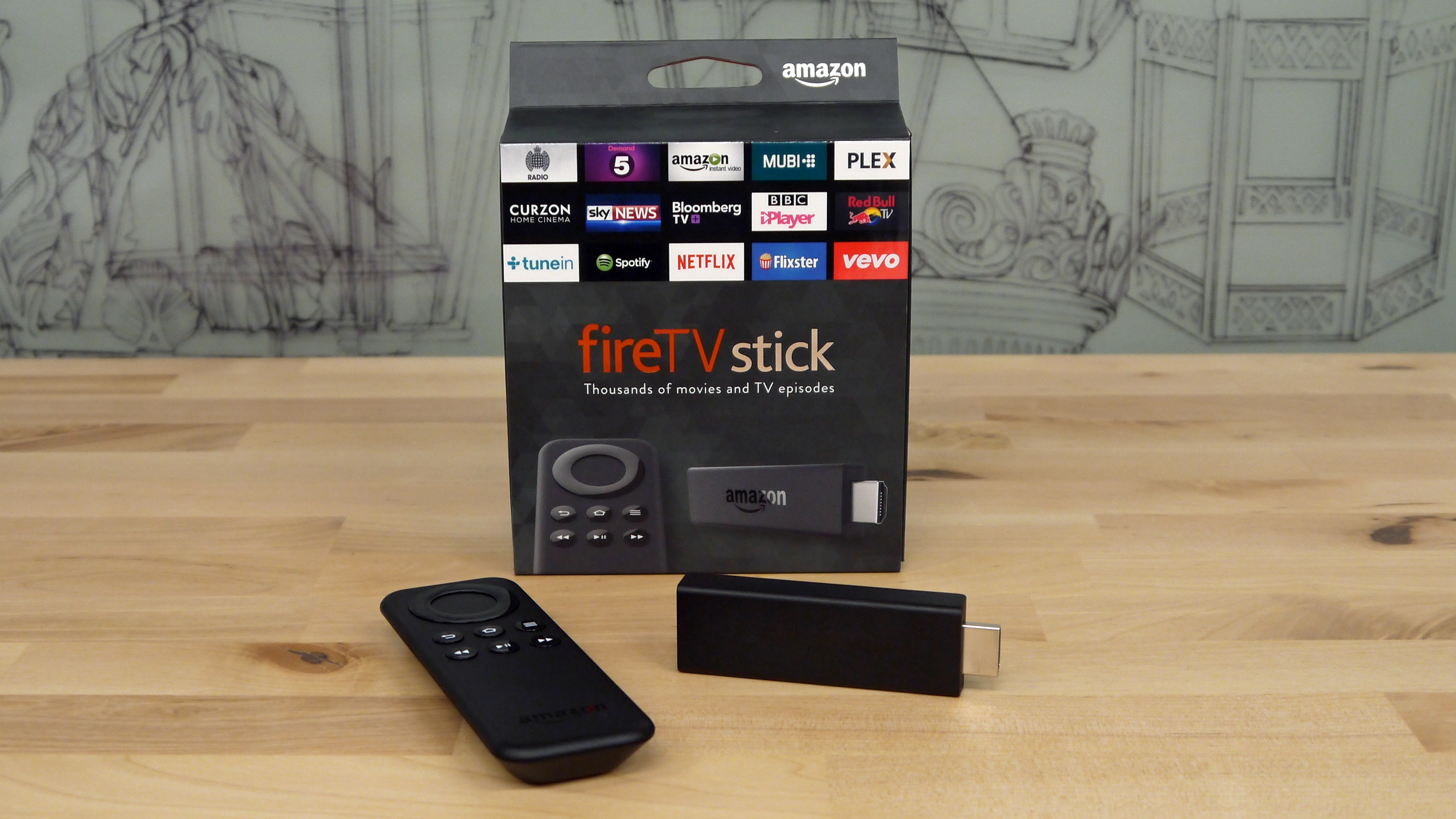
Chromecast Ultra vs. Amazon Fire TV and Fire TV Stick: While Amazon might offer a cheaper streaming stick at $39 (£35, about AU$56), keep in mind that it only supports 1080p, SDR video. Amazon’s $99 (£79, about AU$140) Fire TV, on the other hand, supports 4K but not HDR. Finally, the Amazon Fire TV Cube ($119.99, US-only for now) gets you both 4K and HDR.
All these Amazon products rely heavily on a subscription to Amazon Prime to function at their fullest potential. That said, if you are an Amazon Prime subscriber you won't be able to watch the service natively on Chromecast, as Amazon's mobile app doesn't support Google Cast functionality.
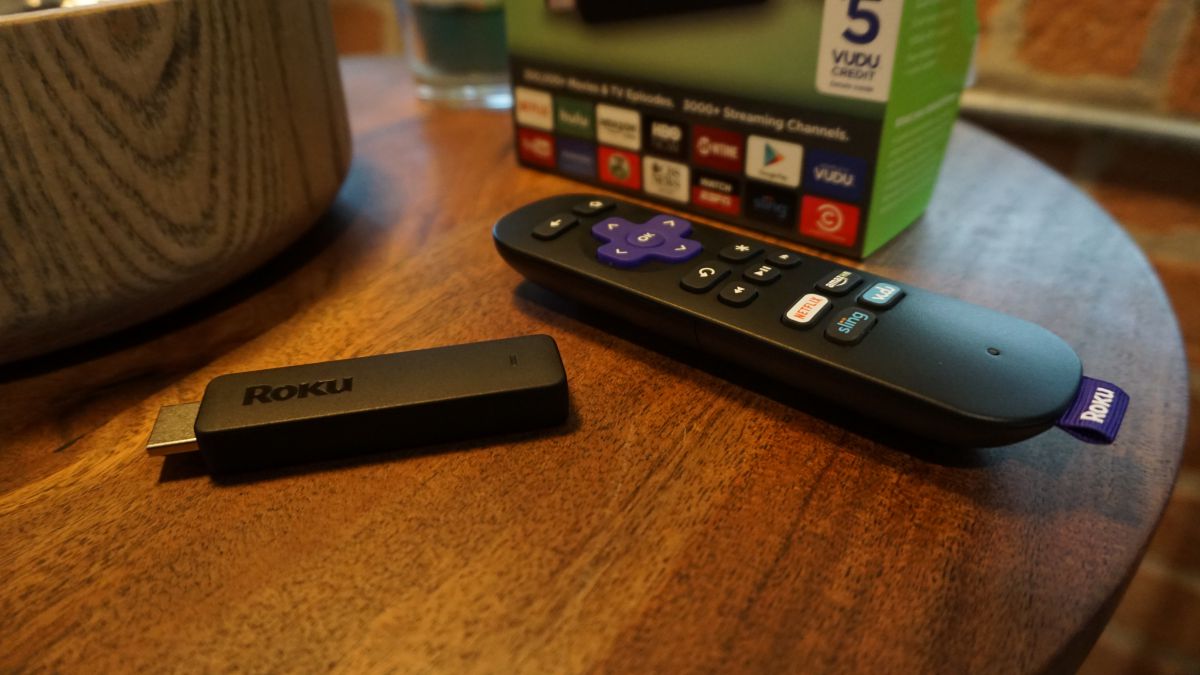
Chromecast Ultra vs. Roku Premiere and Roku Streaming Stick: Here's a story of David and the Goliath. The circular Chromecast does much of what the $99 (£79, about AU$140) Roku Premiere does, though it depends more on your phone, tablet and PC to keep pace. That said, Roku is known for having thousands of channels of content and universal search functionality that allows you to search multiple sources at once as well as a pretty svelte remote.
Google has adopted the latter into the latest version of its Chromecast app, but doesn't have near the amount of channels Roku has. If you're looking for full-size streaming device with access to any and every streaming service, Roku can't be beat. If you're looking for a 4K solution to putting audio and video on your TV, however, Chromecast Ultra is the way to go.
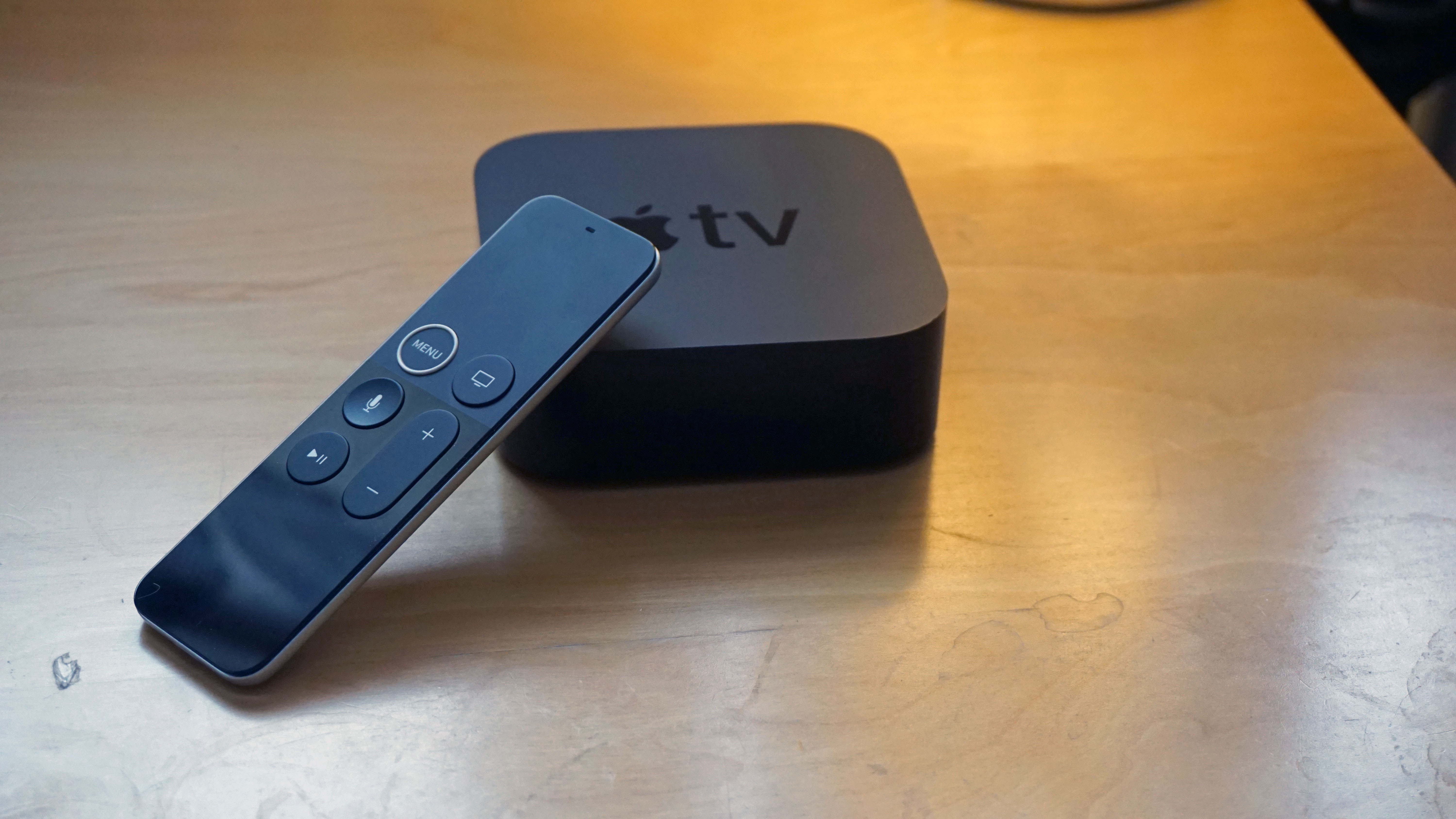
Chromecast Ultra vs. Apple TV 4K: The Apple TV 4K, like Amazon's streamer, favors its own ecosystem, at least in terms of hardware. On the software side of things, Apple opened up its app store to every developer for the first time in the history of its home entertainment device, making it a bit more well-rounded than the Chromecast. It also includes a new remote and support for 4K and HDR, though at $179 / £179 it's a lot more expensive than a Chromecast Ultra.
We liked
It's easy to criticize the few missteps Google has made here (see below), but by and large the Chromecast Ultra is an impeccably pristine streaming device capable of procuring gorgeous 4K HDR streams for less money than the competition.
Minor improvements like the Ethernet adapter improve upon last year's Chromecast, while Google Home integration helps make the Chromecast feel right at home at the epicenter of our burgeoning smart home.
We disliked
That said, for all the positives here, there are still a few lingering issues. The first is its price – $69 / £69. It offers a heck of alot for that sticker price, but it feels like less of a value here than the $35 / £30 Chromecast does considering that it shares nearly all of the same functionality and feature set.
That's due, in fair amount, to the fact that Chromecast really doesn't come with any modern conveniences – both Roku's Streaming Stick and Amazon's Fire TV Stick offer a remote and have a centralized user interface.
Chromecast Ultra: final verdict
All things considered, there's little reason not to buy a Chromecast Ultra if you're a 4K TV owner. At the same time, if you want 4K and HDR video and you have a compatible TV, there's a good chance it already has the built-in apps you need (though maybe not in a very polished interface).
For the most part the Chromecast Ultra offers exceptionally smart, powerful and fast streaming in a device the size of a wafer. There's not as much benefit for the 1080p crowd, but for 4K TV owners, it's hard to find a device that offers as much as Chromecast Ultra for the price.
0 comments:
Post a Comment